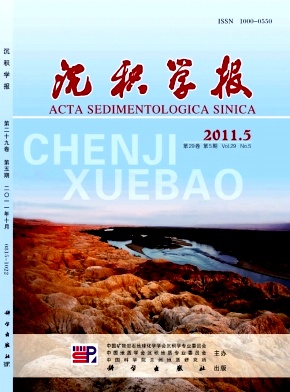Microscopic Characteristics of Extensive Microbial Mats in Mesoproterozoic Era: An example from the Yunmengshan Formation, Western Henan
- Received Date: 1900-01-01
- Rev Recd Date: 1900-01-01
- Publish Date: 2011-10-10
Abstract: The Precambrian biosphere includes almost exclusively microbiota. Activities of benthic prokaryotes in response to the sedimentary dynamics could form the characteristic structures known as "Microbially Induced Sedimentary Structures (MISS)", arising syndepositionally from the interactions of biofilms and microbial mats with the sedimentary grains due to the variations in hydraulic parameters in siliciclastic aquatic environments. Yunmengshan Formation, belonging to Mesoproterozoic Ruyang Group, lies in the south margin of the North China Platform and consists mainly of siliciclastic sedimentary successions. MISS occur on the surface of purple or yellow sandstone interbedded with mudstone or siltstone, especially on junction surface between sandstone and mud lamination. They displayed a plenty of morphologies and were preserved in acompanying with ripple markers as usual. The wellpreserved structures include mat growth features, mat metabolism features, mat destruction features and mat decay features. In vertical section, the typical stacked mmlevel siliciclastic biolaminites consisting of alternations of dark silty mudstones and light quartz sandstone represent repeated growth and burial of mats during repeated depositional events. The dark layers also included Feoxides, sericite and dark asphaltenelike minerals which included 1 620 cm-1 and 1 340 cm-1 organic Raman shift and displayed high dimensional similarities with ethylcellulose, nylon66 and polynorbornene. The dark layers which have been found modern analogues in tidal flat and formed by the mat growth, mat metabolism and the interactions of biofilms and microbial mats with the sediments are considered to represent the remains of ancient microbial mats, whereas the light layers consist of physical process induced quartz grains. The participation of microbial mats in the accretion of the siliciclastic biolaminites is indicated by various MISS, especially mat growth and destruction structures. In the further investigation of thinsections, five types of microstructures have been found: wavy crinkled laminae, network fabrics, mat layer bound small grains, mat layer bound heavy minerals and oriented grains. Wavy crinkled laminae represent the presence of ancient biofilms or microbial mats, and caused by mat growth; oriented grains, mat layer bound small grains and network fabrics related to baffling, trapping and binding of biofilms and microbial mats; The presence of biofilms and microbial mats in the ancient environment promoted the productions of Feoxides and sericite and lined the mat layers. These microscopic units testify the presence of thick mat in moderate to low hydrodynamic disturbance and reflect the unique characters of sediments which were occupied, stabilized and fixed by microbial mats. Microstructures can mainly be preserved in the favorable ecological sites where microbial mats colonized, such as upper intertidal and lower supratidal zones. Microstructures could be used to reconstruct smallscaled facies within coastal environments, and include hints to paleoclimatological, hydrological and sedimentological conditions.
| Citation: | XING Zhifeng. Microscopic Characteristics of Extensive Microbial Mats in Mesoproterozoic Era: An example from the Yunmengshan Formation, Western Henan[J]. Acta Sedimentologica Sinica, 2011, 29(5): 857-865. |






 DownLoad:
DownLoad: